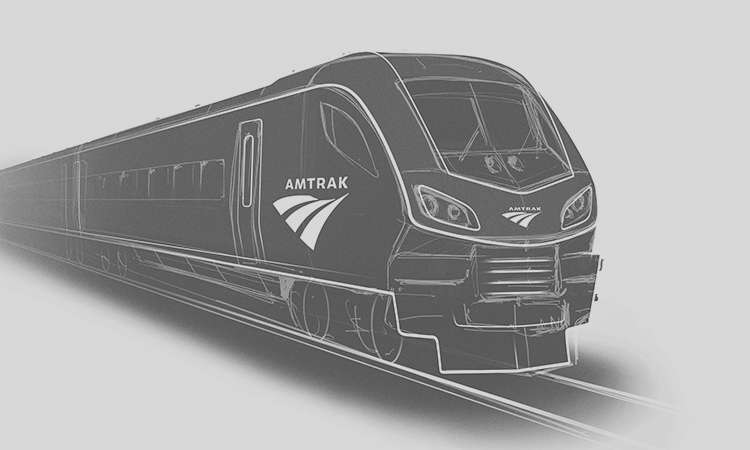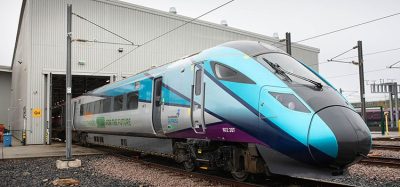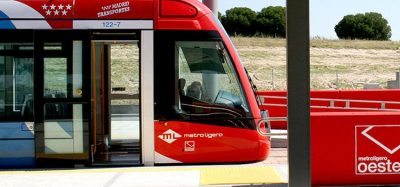Amtrak announces $7.3 billion investment in new train fleet
Posted: 8 July 2021 | Global Railway Review | No comments yet
Amtrak’s investment includes a contract with Siemens Mobility for the manufacture of up to 83 multi-powered modern trains, including dual power and hybrid battery trains.


Credit: Amtrak
Amtrak has announced that it is contracting Siemens Mobility to manufacture a new fleet of up to 83 multi-powered modern trains that will be leveraged for state and northeast services, with further options for up to 130 additional trains to support Amtrak growth plans. The new fleet will offer modern rail amenities that better serve Amtrak customers.
“These new trains will reshape the future of rail travel by replacing our ageing 40-to-50-year old fleet with state-of-the-art, American-made equipment,” said Amtrak’s CEO, Bill Flynn. “This investment is essential to preserving and growing our Northeast Regional and state-supported services, and will allow our customers to travel comfortably and safely, while deeply reducing criteria pollutants.”
The new equipment will operate on the Northeast Corridor, long distance Palmetto and various state-supported routes that will replace Amtrak-owned Amfleet, Metroliner and state-owned equipment on certain routes throughout the country. In addition to the Northeast Regional, other routes will include the Adirondack, Carolinian, Cascades, Downeaster, Empire Service, Ethan Allen Express, Keystone Service, Maple Leaf, New Haven/Springfield Service (Amtrak Hartford Line and Valley Flyer), Pennsylvanian, Vermonter and Virginia services.
The order includes dual power and hybrid battery trains. The first will be delivered in 2024, while the first of its kind Venture Hybrid battery train will begin testing in 2025. The trains for the Northeast Corridor and state-supported routes will be delivered from 2024 through to 2030.
“Amtrak’s procurement of new rolling stock is historic. These state-of-the-art trainsets will allow Amtrak to operate and provide services more safely, efficiently and reliably,” said Federal Railroad Administration (FRA) Deputy Administrator, Amit Bose. “More importantly, doing so will give riders the modern passenger rail accommodations, amenities and comforts that they want and deserve.”
The $7.3 billion investment includes the purchase of equipment, a long-term parts supply and service agreement, facility modifications and upgrades and other programme expenses.
A long-term service agreement for technical support, spare parts and material supply will accompany the contract to manufacture the trains. The new trains include remote monitoring and fully integrated digital diagnostics for increased reliability. These advanced features will enable Amtrak to test and develop new technology and introduce new maintenance approaches to drive efficiency, increase availability and reduce long term costs.
“These new trains, some of which will be our first hybrid battery operations in the United States, will transform the way that Americans travel. Offering a more sustainable and comfortable travel experience, they will be built for excellence and built with pride in Sacramento, California,” stated Michael Cahill, President of Siemens Mobility – Rolling Stock in North America. “Over the past decade, we’ve worked closely with Amtrak and its state partners to develop and deliver trains that meet the needs of America’s travellers; these next generation trainsets build on that experience and offer much more.”
“These trains will offer Amtrak and its passengers the latest in sustainable and intelligent rail technology. We believe that hybrid battery and dual powered trains will play an important role in reducing emissions and protecting the environment in the United States. In addition, through our digital services, Amtrak will receive real-time information about vehicle operations, allowing them to ensure that their passengers arrive safely and efficiently,” stated Michael Peter, CEO of Siemens Mobility. “Amtrak’s investment illustrates America’s commitment to enhancing its rail systems, offering passengers a more sustainable option for travel.”
The latest trains will feature more comfortable seating, individual power outlets and USB ports, onboard Wi-Fi, enhanced lighting and panoramic windows, larger vestibules, a more contemporary food service experience, including self-service options, as well as state-of-the-art customer trip information, digital seat reservation systems and navigation display systems.
The trains were designed with the latest health and safety standards, including enhanced HVAC, touchless restroom controls and automated steps. The trains meet all of the latest safety regulations and standards, providing improved structural safety. With expanded capacity and the ability to shorten trip time, Amtrak expects the new equipment to add over 1.5 million riders, annually.
Using multi-power systems, including hybrid battery operation for a portion of the fleet used for New York’s Empire Service, these trains will also provide a substantial environmental benefit through reduced criteria pollutants compared to the existing fleet. They will be designed with Amtrak’s new standard of enhanced accessible features, including inductive hearing loops, accessible restrooms and vestibules, an accessible Food Service car and lifts for customers with reduced mobility, including wheelchair users.
The trains will be manufactured at Siemens Mobility’s rail manufacturing facility in Sacramento, California, and will comply with the Federal Railroad Administration Buy America Standards. It is one of the largest plants of its kind on the continent, and also one of the most sustainable, using a 2.1 MW solar panel installation to provide the majority of its power coming from the strong, reliable Californian sun.
Related topics
Electric/Hybrid Rolling Stock, Funding & Finance, Operational Performance, Passenger Experience/Satisfaction, Passenger Information Systems (PIS), Passengers With Reduced Mobility (PRM), Rolling Stock Orders/Developments, Sustainability/Decarbonisation
Related organisations
Amtrak, Federal Railroad Administration (FRA), Siemens Mobility








